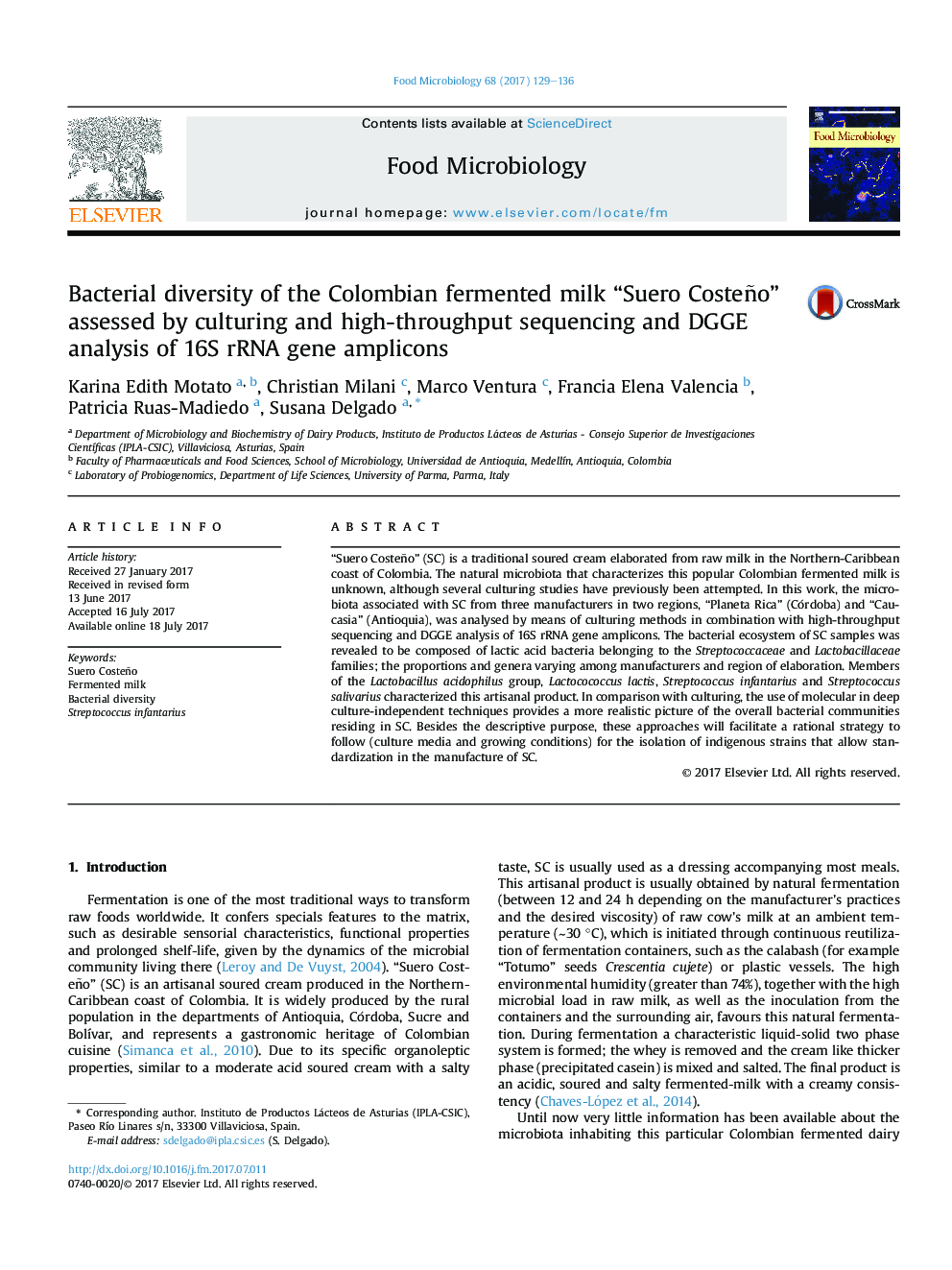| Article ID | Journal | Published Year | Pages | File Type |
|---|---|---|---|---|
| 5740115 | Food Microbiology | 2017 | 8 Pages |
â¢The microbiota of “Suero Costeño” was assayed by culturing and molecular methods.â¢The composition depends on the region and the practices of the manufacturers.â¢High-throughput 16S rDNA sequencing analysis revealed the overall diversity.â¢Autochthonous Streptococcus infantarius isolates were obtained.
“Suero Costeño” (SC) is a traditional soured cream elaborated from raw milk in the Northern-Caribbean coast of Colombia. The natural microbiota that characterizes this popular Colombian fermented milk is unknown, although several culturing studies have previously been attempted. In this work, the microbiota associated with SC from three manufacturers in two regions, “Planeta Rica” (Córdoba) and “Caucasia” (Antioquia), was analysed by means of culturing methods in combination with high-throughput sequencing and DGGE analysis of 16S rRNA gene amplicons. The bacterial ecosystem of SC samples was revealed to be composed of lactic acid bacteria belonging to the Streptococcaceae and Lactobacillaceae families; the proportions and genera varying among manufacturers and region of elaboration. Members of the Lactobacillus acidophilus group, Lactocococcus lactis, Streptococcus infantarius and Streptococcus salivarius characterized this artisanal product. In comparison with culturing, the use of molecular in deep culture-independent techniques provides a more realistic picture of the overall bacterial communities residing in SC. Besides the descriptive purpose, these approaches will facilitate a rational strategy to follow (culture media and growing conditions) for the isolation of indigenous strains that allow standardization in the manufacture of SC.
